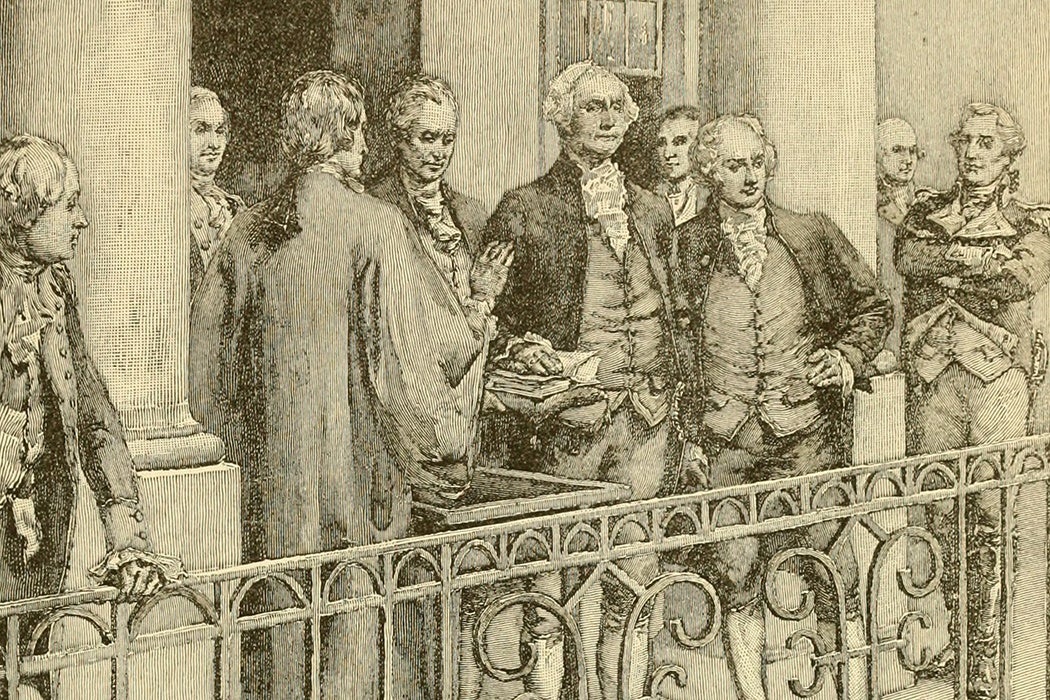“I, <name>, do solemnly swear (or affirm) that I will faithfully execute the office of President of the United States, and will to the best of my ability, preserve, protect, and defend the Constitution of the United States.” This is the oath of office of the President of the United States, as codified in the US Constitution and administered by the Chief Justice of the Supreme Court on Inauguration Day. Other than that, the ceremonies of Inauguration Day are all pomp, circumstances, and tradition, all of which now happen on January 20.
But until 1933, Inauguration Day was March 4, four months after the election. Why was March 4 the original Inauguration Day? That was the date the Constitution took effect in 1789. And in the eighteenth century, four months was considered a reasonable amount of time to count all the votes, gather the Electors together for their vote, and allow the President-elect time to get his cabinet set up. Communication time was then the same as travel time, by horse and sailing ships.
But four months between administrations turned out to be too long. After the election of 1800, for example, the lame duck John Adams tried to pack the judiciary with his appointments before Jefferson was in office. After the election of 1860, newly elected President Abraham Lincoln could do nothing as out-going President James Buchanan allowed secessionists to seized federal fortifications and arsenals. The election of 1932 saw incredible uncertainty and miscommunication between the incoming Roosevelt and out-going Hoover administrations, exacerbating the ruinous financial chaos of the Great Depression.
The American Bar Association’s Special Committee on Change of Date of Presidential Inauguration of 1920 was blunt about the “serious evil fraught with much danger” that could fester during the four months between administrations. They were, however, agnostic on a new date for the change-over, noting that some argued for “a less clement time of year.” One suggestion was moving the election to September and the inauguration to November.
Eventually, however, the Constitutional amendment process confirmed a virtual national consensus that the March Inauguration Day no longer worked. The Constitution had to be amended for this date-change, and that same Twentieth Amendment also shortened the lame-duck session of Congress, which is why the new session of Congress starts on January 3 instead of in March. (The origins of the colorful “lame duck” are credited to a British financial world: a stockbroker going bust was first described as a lame duck in 1761. Americans translated the term into politics by the 1860s for a politician on the way out.)
Get Our Weekly Digest
Franklin Roosevelt was the first President to be inaugurated on January 20, and since then the modern transition, has (until recently, perhaps) been an expeditious and fairly smooth affair.
Editor’s Note: This story was updated to delete an errant hyphen.







